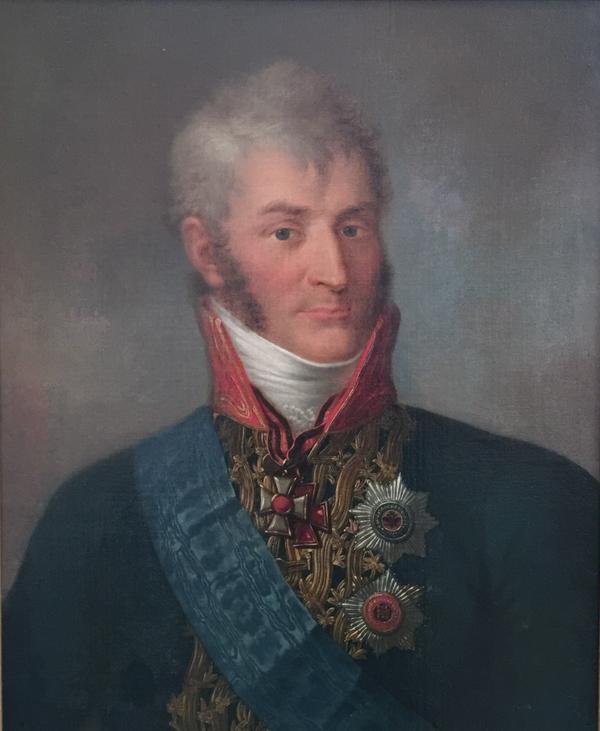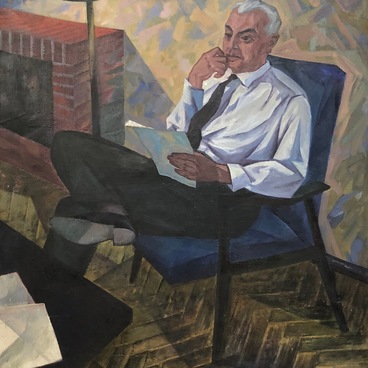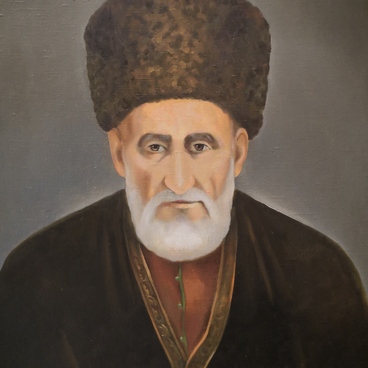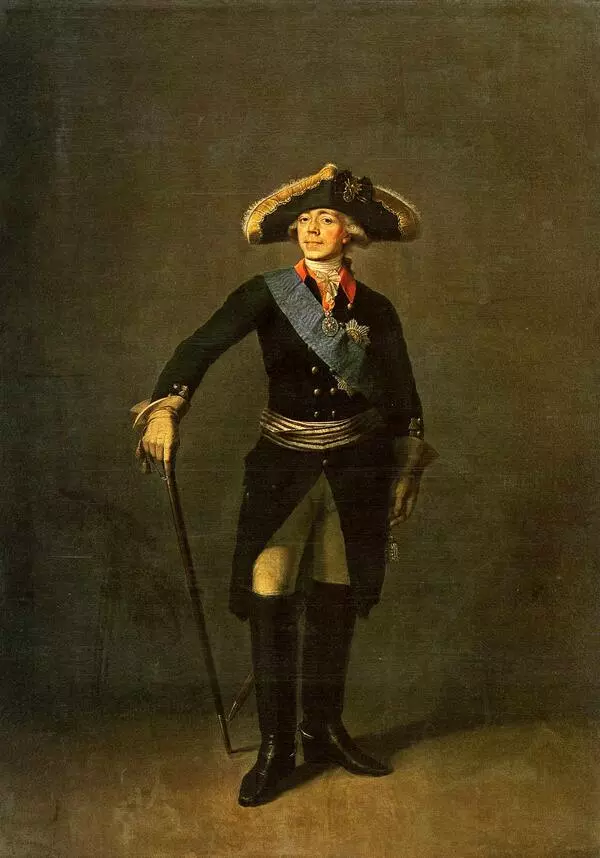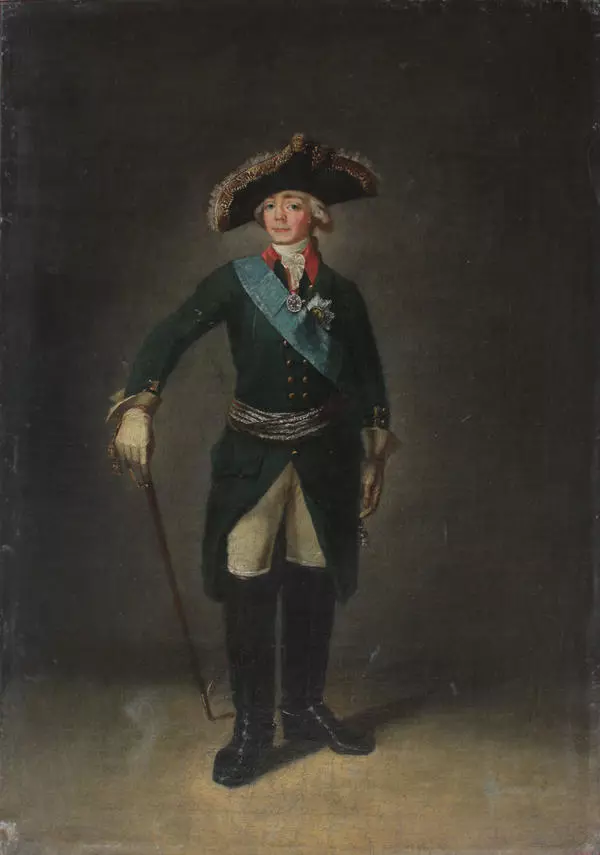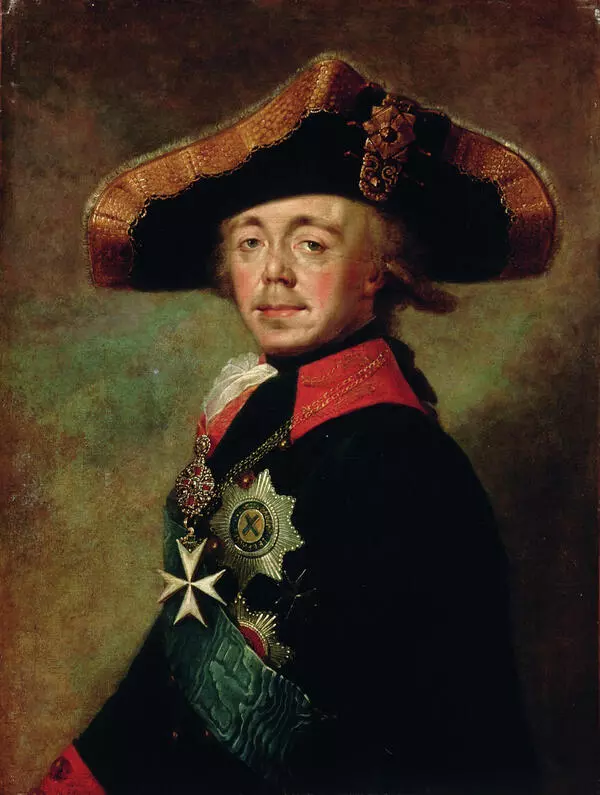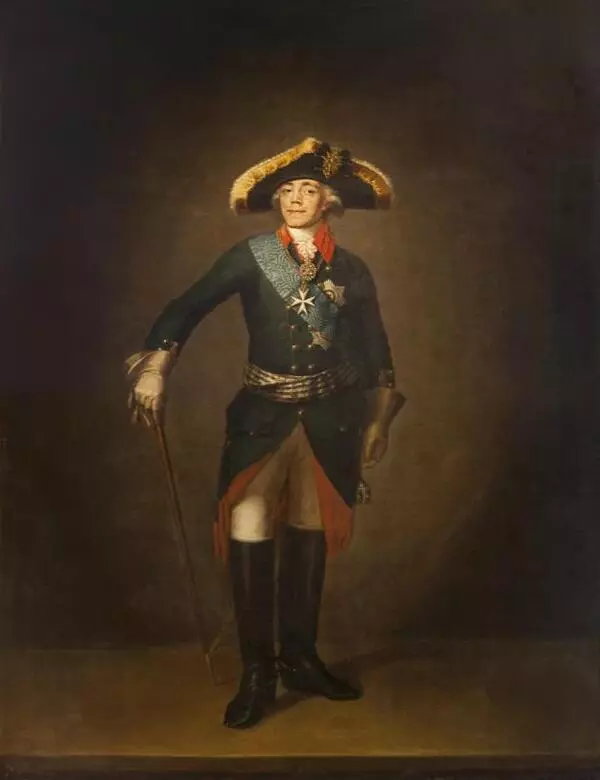The Portrait of Count Nikolai Alexandrovich Zubov is ascribed to the brush of Stepan Shchukin. Presumably, he painted it in 1803. The artist depicted Count Nikolai Zubov, the elder brother of Catherine the Great’s favourite minion.
The artisan managed to create a majestic image of a high-ranking nobleman: the painter depicted the Count in his court dress decorated with honorary orders. A blue sash is slung over the man’s shoulder: this is an element of the Order of St. Andrew the Apostle the First-Called. The order was the highest state award of the Russian Empire. At the same time, the artist skillfully conveyed the arrogant and cold temper of that cruel man. He emphasized these features in the Count’s countenance.
Thanks to his royal-favourite brother, Nikolai Zubov obtained a high position in Society. During the reign of Catherine II, he served as a Major General. The Count’s contemporaries, however, negatively reported on his character. The Russian Biographical Dictionary states that ‘he was rude and arrogant in his address, and quite readily put his strong fists to action’. The Count is particularly infamous for his involvement in the assassination of Emperor Paul I. He is reported to be the first of the conspirators to deliver a blow into the left temple of the Ruler with a massive gold snuffbox.
Artist Stepan Shchukin grew up in the Moscow Orphanage, and for that reason it is difficult to give his exact birth date. However, it is known that at an early age he demonstrated an passion for drawing. Therefore, in his teens he was transferred, as a student, to the Imperial Academy of Arts.
In St. Petersburg, in 1776, he happened to be enrolled into the class of one of the best portrait painters of the time - Dmitry Levitsky. Experts noted that afterwards Stepan Shchukin always used a free colourful stroke, which he had learned from his famous tutor. The artist combined this painting technique with a modest colour scheme.
His portraits were always notable for the accuracy of the drawing, harmonious colour scheme and a brilliant painting technique. In his works, Stepan Shchukin combined the chamber portrait technique of Dmitry Levitsky’s school with elements of early romanticism. He managed to preserve the portrait traditions of the 18th century and further promote them towards greater ease and subtlety. Among Stepan Shchukin’s students were famous artists Vasily Tropinin and Alexander Varnek.
The Portrait of Count N.A. Zubov has a complicated history. The painting was stolen from the museum in the city of Grozny during the military actions in the 1990-s. In 2001, the portrait was identified in the catalogue of the Sotheby’s Auction House. The Department for Cultural Preservation of the Ministry of Culture of the Russian Federation managed to bring the portrait back to Russia. It known that prior to 1917 the portrait had been in the art collection of the Talyzin Counts.
The artisan managed to create a majestic image of a high-ranking nobleman: the painter depicted the Count in his court dress decorated with honorary orders. A blue sash is slung over the man’s shoulder: this is an element of the Order of St. Andrew the Apostle the First-Called. The order was the highest state award of the Russian Empire. At the same time, the artist skillfully conveyed the arrogant and cold temper of that cruel man. He emphasized these features in the Count’s countenance.
Thanks to his royal-favourite brother, Nikolai Zubov obtained a high position in Society. During the reign of Catherine II, he served as a Major General. The Count’s contemporaries, however, negatively reported on his character. The Russian Biographical Dictionary states that ‘he was rude and arrogant in his address, and quite readily put his strong fists to action’. The Count is particularly infamous for his involvement in the assassination of Emperor Paul I. He is reported to be the first of the conspirators to deliver a blow into the left temple of the Ruler with a massive gold snuffbox.
Artist Stepan Shchukin grew up in the Moscow Orphanage, and for that reason it is difficult to give his exact birth date. However, it is known that at an early age he demonstrated an passion for drawing. Therefore, in his teens he was transferred, as a student, to the Imperial Academy of Arts.
In St. Petersburg, in 1776, he happened to be enrolled into the class of one of the best portrait painters of the time - Dmitry Levitsky. Experts noted that afterwards Stepan Shchukin always used a free colourful stroke, which he had learned from his famous tutor. The artist combined this painting technique with a modest colour scheme.
His portraits were always notable for the accuracy of the drawing, harmonious colour scheme and a brilliant painting technique. In his works, Stepan Shchukin combined the chamber portrait technique of Dmitry Levitsky’s school with elements of early romanticism. He managed to preserve the portrait traditions of the 18th century and further promote them towards greater ease and subtlety. Among Stepan Shchukin’s students were famous artists Vasily Tropinin and Alexander Varnek.
The Portrait of Count N.A. Zubov has a complicated history. The painting was stolen from the museum in the city of Grozny during the military actions in the 1990-s. In 2001, the portrait was identified in the catalogue of the Sotheby’s Auction House. The Department for Cultural Preservation of the Ministry of Culture of the Russian Federation managed to bring the portrait back to Russia. It known that prior to 1917 the portrait had been in the art collection of the Talyzin Counts.

